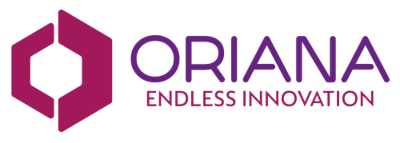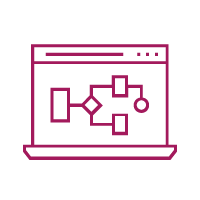What is a Chief Information Officer? Back in the day, it was an internally-focused, mainly technical role. Now we can describe a CIO as the company executive responsible for the management, implementation, and usability of information and computer technologies.
Alternatively, if you are a CIO, perhaps you’ll settle for this description: The executive who is pulled in numerous contrary directions at once.
· We need to accelerate down the digitalization path, we need to become disrupters.
· We need to be careful to take everything one step at a time: sudden change could be catastrophic.
· We can’t afford massive changes in software, re-training, and re-working the basis of everything.
· We can’t afford not to make changes: we have to lead the competition, not follow it.
· We need to embrace change now!
· We need to wait just a little bit longer– something new could be just around the corner.
If you recognize any of these contradictions, then our purpose in a series of upcoming blogs is to demonstrate that it is possible to find solutions which will streamline business processes and technology, and align them with your business priorities. In doing so,strategies to increase the bottom line will also become more accessible.
Enter Oriana
Let’s put our cards on the table: We are Oriana. We provide a low-code solution that has been successfully in use for twenty years, and we are proud of what we do, and how we do it. We have some great case studies, especially with large organizations. In upcoming blogs we’ll be giving you concrete examples, from companies starting at 500 employees, running through 5,000 and upwards.
We do low-code, and we do workflows. Put together, our offering allows fast and secure digitalization and change for big companies, especially those with complex and overlapping processes. Oriana eats complexity for breakfast.
Start small, grow big
Many organizations adopting the Oriana Low-Code Platform start relatively small by tackling a problem at the departmental level. If the process is complex, then the Oriana platform quickly proves itself. For example, in the early stages of the covid-19 pandemic, a National Health agency asked for tenders to implement a phone support helpline. Naturally, this had to integrate with the existing ERP and many existing applications. A competitor tender offered a two-month development period. Oriana offered – and achieved – a two-day turnaround.
There is a myth that low-code is ‘just for playing’, and indeed it does offer a hugely valuable way of allowing the actual users of a system to design exactly how they wish it to operate. The Oriana Low-Code Platform is so much more than this, however, enabling large-scale,organization-wide change, especially when complex workflow management comes into the picture.
Of course, it always comes into the picture, because every business and organization has multiple complex workflows to deal with. Even an apparently simple process such as onboarding actually has many different layers to contend with, such as security and regulatory issues. It’s no great surprise that in their need to get results, and fast, Business Managers sometimes reach for the nearest Shadow IT ‘solution’ which only provides short-term relief, (and one more potential headache for the CIO). Oriana, along with other low-code solutions, can harness Shadow IT within managed platforms.
Often an added difficulty comes with third-party suppliers having their own proprietary software, which increases the risk of vendor lock. Not so with Oriana, which uses SQL – accessible to any programmer or developer, anywhere.
Highly-regulated environments
Here’s another example of how the steps to digitalization can start small with Oriana, by addressing a particular departmental issue, then expanding over time. Pharma companies operate in highly-regulated environments, where every step on the road to developing a new drug treatment must be meticulously documented. Researchers around the world will report with hand-written documents, text documents, spreadsheets, office presentations, and many other forms of communication. All of these must be digitalized in a standardized and accessible way. Because of the regulatory and medical implications, the system must be transparent to query and also sit on top of the company’s existing ERP. And at every stage, the Case Study dynamics are changing, with access being required by varied user groups. Sales and Marketing will have different needs to Legal or Medical departments, and everyone needs access to different flavors of the core information. All very doable with Oriana.
And once Oriana is servicing some of the needs of an organization, it rapidly becomes clear how advantageous it is to roll the platform out to further use cases. It’s a logical progression, which often achieves proven results in weeks, rather than months.
Enterprise-grade solutions
Oriana low-code solutions provide the answers to many digitalization needs, for large organizations, where complex workflows exist. Deploying it is fast and efficient, and can be rapidly scaled. Low-code is not just for playing’, but provides Enterprise-Grade solutions. However, the beauty of low-code is that it does allow CIOs to extend their team, using in-house Citizen Developer resources who understand the business issues.
We want to reach you, the hard-pressed CIO, and help stop you from being pulled in many directions at once. With Oriana’s low-code platform, there is a clear digitalization pathway, using an Enterprise Grade platform delivering complex workflow solutions. Watch this space!
And if you’re not the CIO, there’s still a great deal to learn from our upcoming blog series about real-world use cases.



